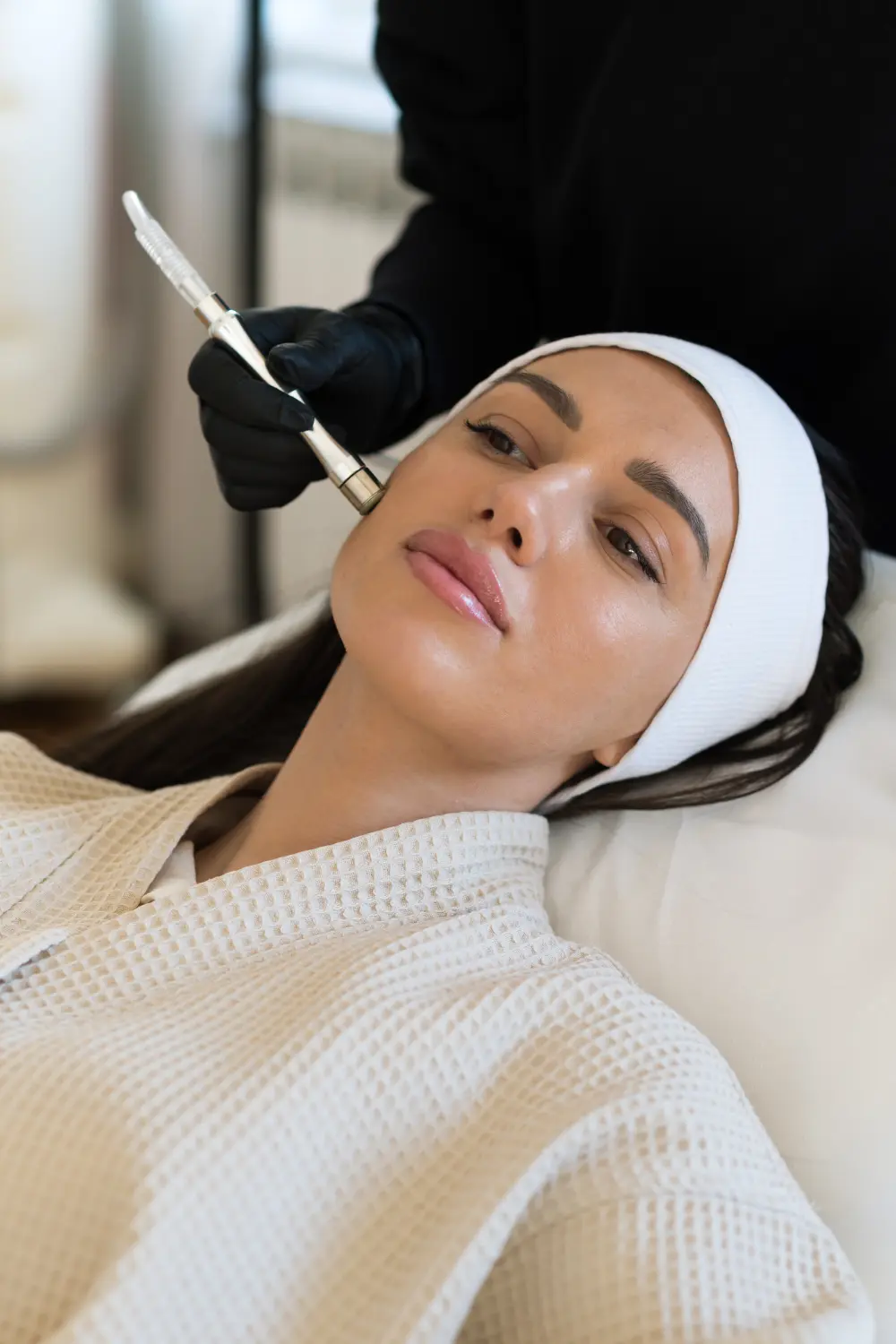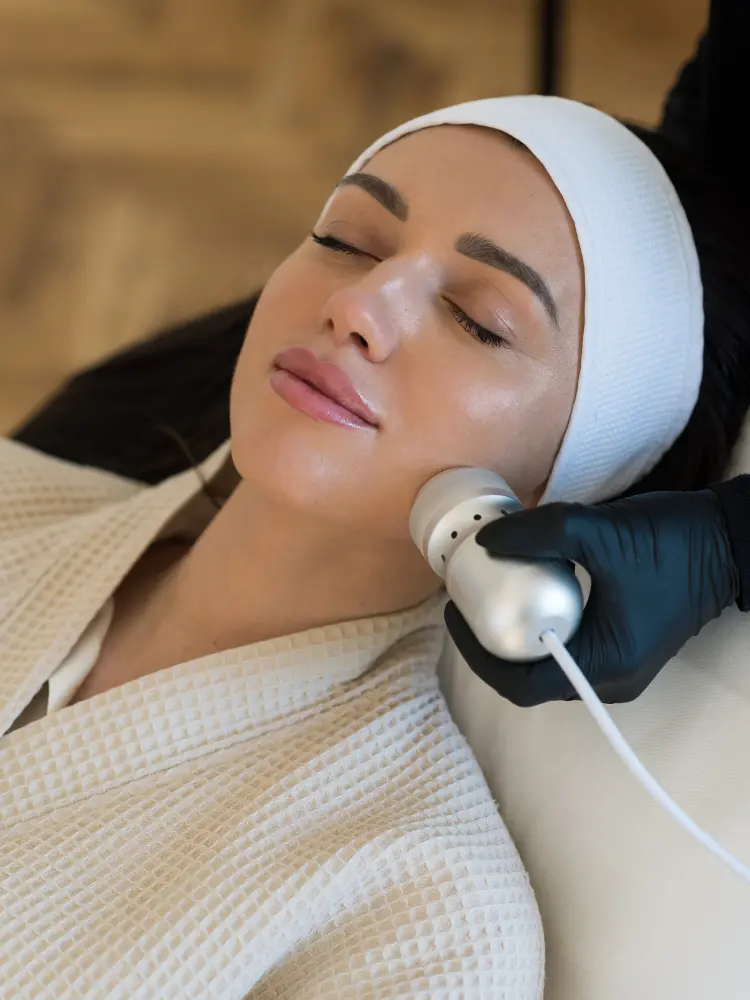
Fibroblast Plasma Skin Tightening is a revolutionary, non-surgical treatment that utilizes the power of plasma energy to lift, tighten, and rejuvenate the skin. By targeting fibroblasts in the dermis, it stimulates collagen and elastin production, effectively reducing wrinkles, sagging skin, and even improving the appearance of scars—all with minimal downtime and impressive, long-lasting results.
Why Pursue Your Rejuvenation Journey With Us?
For those in Mumbai seeking significant skin tightening and rejuvenation without the risks and downtime of surgery, Fibroblast offers a compelling alternative. Here’s why it’s gaining popularity:
1. Non-Surgical and Minimally Invasive
Achieve noticeable lifting and tightening without any incisions, stitches, or general anaesthesia. This significantly reduces risks and recovery time.
2. Targeted and Precise Treatment
The plasma pen allows for highly precise targeting of specific areas of concern, whether it’s delicate skin around the eyes or larger areas of sagging.
3. Stimulates Natural Collagen Production
Unlike treatments that simply inject substances into the skin, Fibroblast encourages your body’s own natural collagen and elastin production for long-lasting and natural-looking results.
4. Relatively Short Downtime
While there is some visible healing involved, the downtime is considerably less than surgical procedures, typically lasting around 5-7 days.
4. Versatile Treatment Areas
Fibroblast can address a wide range of concerns on the face and body, making it a comprehensive rejuvenation option.
A Deeper Look at the Benefits of Fibroblast Treatement
Significant Skin Tightening and Lifting
The primary benefit of Fibroblast is its ability to visibly tighten and lift sagging skin. This is particularly effective for the upper and lower eyelids (non-surgical blepharoplasty), reducing hooded eyelids and under-eye bags. It can also lift the cheeks, jowls, and neck, leading to a more defined and youthful facial contour.
Reduction in Fine Lines and Wrinkles
By stimulating the production of new collagen and elastin, Fibroblast effectively smooths out fine lines and wrinkles. This includes crow's feet, forehead lines, nasolabial folds (smile lines), and marionette lines, resulting in a more youthful and refreshed appearance.
Improvement in Acne Scars and Stretch Marks
The controlled micro-trauma created by the plasma pen triggers a healing process that can significantly improve the texture and appearance of certain types of acne scars (particularly mild to moderate atrophic scars) and stretch marks. The new collagen helps to fill in depressions and smooth out irregularities.
Tightening of Loose Skin on the Body
Beyond the face, Fibroblast can be used to tighten loose skin on areas like the neck, décolletage, abdomen (post-pregnancy or weight loss), and above the knees. This offers a non-surgical solution for areas where skin laxity is a concern.
Long-Lasting Results
While individual results can vary, the collagen and elastin stimulated by Fibroblast continue to improve the skin's firmness and texture for several months after the treatment. The results are considered long-lasting, often lasting for several years, although they are not entirely permanent as the natural aging process will continue.
Minimal Downtime Compared to Surgery
Unlike surgical facelifts or eyelid surgeries that require weeks of recovery, the downtime associated with Fibroblast is significantly less. While there will be small carbon crusts (dots) on the treated areas that last for about 5-7 days, most individuals can resume their normal activities within a few days, albeit with some visible evidence of the treatment.
Results








FAQ
How does Fibroblast Plasma Skin Tightening work?
The Fibroblast device creates a tiny electrical arc (plasma) that sublimates the superficial layer of the skin. This controlled micro-injury stimulates fibroblasts in the dermis to produce more collagen and elastin, which are the key proteins responsible for skin firmness and elasticity. The skin around the treated area tightens as it heals, resulting in a visible lifting effect.
Is the treatment painful?
A topical anaesthetic cream is applied to the treatment area for approximately 45-60 minutes prior to the procedure to minimize discomfort. Most clients describe the sensation during the treatment as a warm or prickly feeling.
What is the downtime like? What can I expect?
Immediately after the treatment, the treated areas will be red and slightly swollen, with small carbon crusts (tiny brown or black dots) visible on the surface. These crusts will naturally dry and fall off over the next 5-7 days. It’s important not to pick at them. Swelling typically subsides within 2-3 days. Most people can return to work after a few days, but the carbon crusts will be visible during the healing process.
How many Fibroblast treatments will I need?
The number of treatments required depends on the degree of skin laxity and the area being treated. For mild to moderate skin tightening, one treatment may be sufficient. However, more significant laxity or larger areas may require 2-3 treatments spaced 8-12 weeks apart for optimal results.
Is Fibroblast safe for Indian skin tones?
Fibroblast can be safely performed on Indian skin when done by a trained and experienced practitioner. However, as with any treatment that involves creating controlled trauma to the skin, there is a potential risk of post-inflammatory hyperpigmentation (PIH). Following the aftercare instructions carefully, especially strict sun protection, is crucial to minimize this risk.
How long do the results of Fibroblast last?
The results of Fibroblast are considered long-lasting, often lasting for several years. However, like all non-surgical treatments, they are not entirely permanent, as the skin will continue to age naturally. Lifestyle factors, sun exposure, and genetics will also play a role in the longevity of the results. Many clients opt for maintenance treatments every 1-2 years to prolong the effects.
I have a wedding in December. Is now a good time to consider Fibroblast?
It is now mid-August. Depending on the area you wish to treat and the expected number of sessions, starting Fibroblast treatments now could be a good option to see significant results before your December wedding. However, it’s crucial to schedule a consultation as soon as possible to discuss your specific needs and create a realistic treatment timeline, keeping in mind the healing period required after each session.

